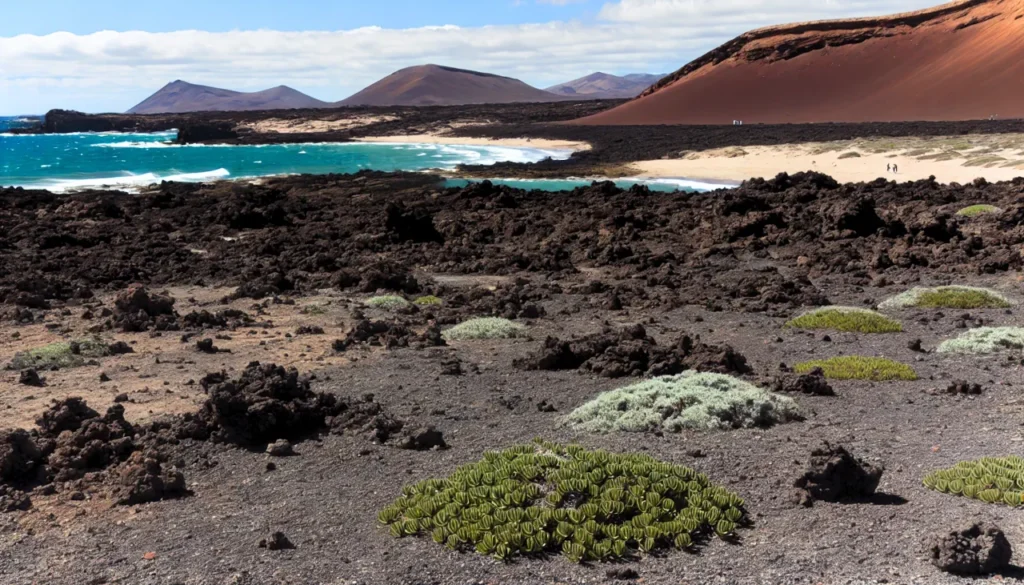Lanzarote is an amazing place that is rightly considered one of the most unique islands in the Canary Archipelago. The island impresses with its diversity and contrasts, offering travellers many interesting sights and places to visit. If you are planning a trip to Lanzarote and wondering what to see, this island is a real find for lovers of nature, culture and outdoor activities. Everyone will find interesting places to see.
The island is renowned for its volcanic landscapes, white sand beaches and cultural monuments, creating the perfect setting for those looking for Lanzarote holiday destinations. Whether you prefer excursions or travelling on your own, there are plenty of places to visit in Lanzarote that will impress with their beauty and uniqueness.
When you come to Lanzarote, one of the main questions that arises is where to go and what to visit in Lanzarote. The island offers a huge number of options for exciting trips and self-guided tours. Here you can enjoy stunning views, sunrises and sunsets, explore volcanoes, caves, architectural landmarks and numerous beaches.
If you are planning your own excursions, Lanzarote has many interesting places to visit. These attractions can range from natural sites to cultural centres, so there is something for everyone. Lanzarote is ideal for those who want to explore the island at their own pace, creating itineraries tailored to their personal preferences.
For those wondering what to see in Lanzarote, it is important to remember that it is not only natural wonders such as volcanoes and lava fields, but also cultural monuments, historic buildings and museums. Every corner of this island offers something new and unique, making it a great choice for holidays with families and solo travellers alike.
Thus, Lanzarote attractions include a variety of tourist spots worth seeing. When planning your trip, don’t forget to pay attention to the most popular places for excursions, as they will help you to truly appreciate the full scale and beauty of this magical island.
Attractions
Jameos del Agua
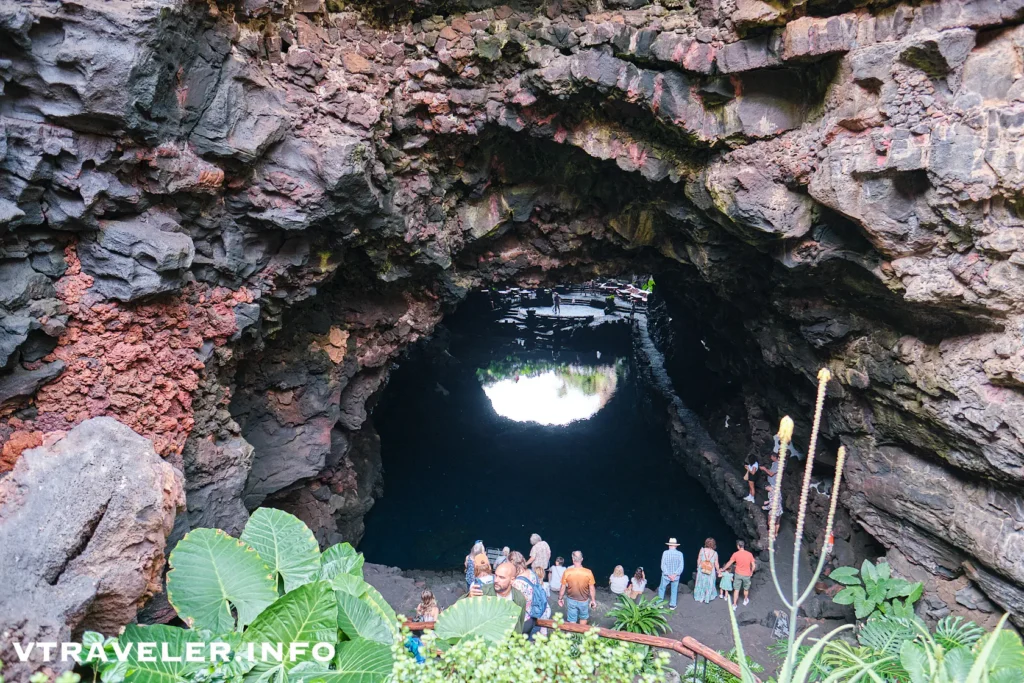
This cave in the north of Lanzarote is an example of the harmony between nature and art. Renowned artist Cesar Manrique transformed the natural cave complex into a cultural space with an underground lake that is home to rare albino crabs. Here you will find a concert hall and restaurant immersed in the natural surroundings.
La Geria Vineyards

La Geria Vineyards is famous for the fact that the vines are grown directly on volcanic soil. This gives local wines such as Muscatel and Malvasia a unique flavour. Many wineries offer tours and tastings, allowing you to learn more about the local winemaking tradition.
Jardín de Cactus (Cactus Garden)
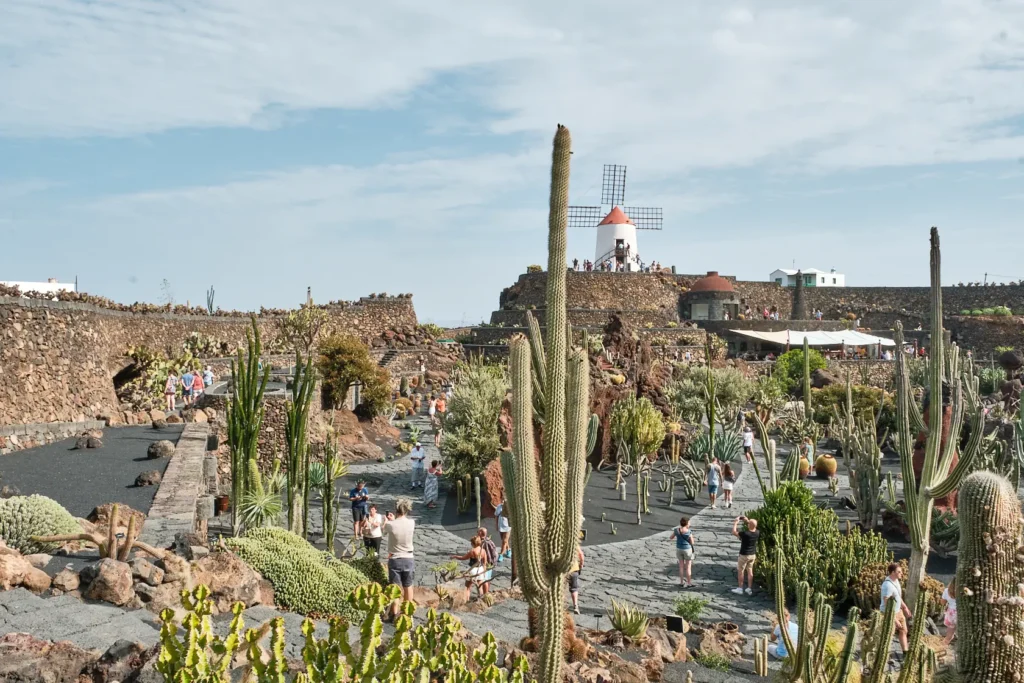
Another of Cesar Manrique’s creations, the Jardín de Cactus gathers more than 1,100 species of plants. Here you can admire rare cacti set against the backdrop of an ancient mill and artificial ponds. This garden is a symbol of respect for the nature of Lanzarote.
Charco de Los Clicos Lagoon
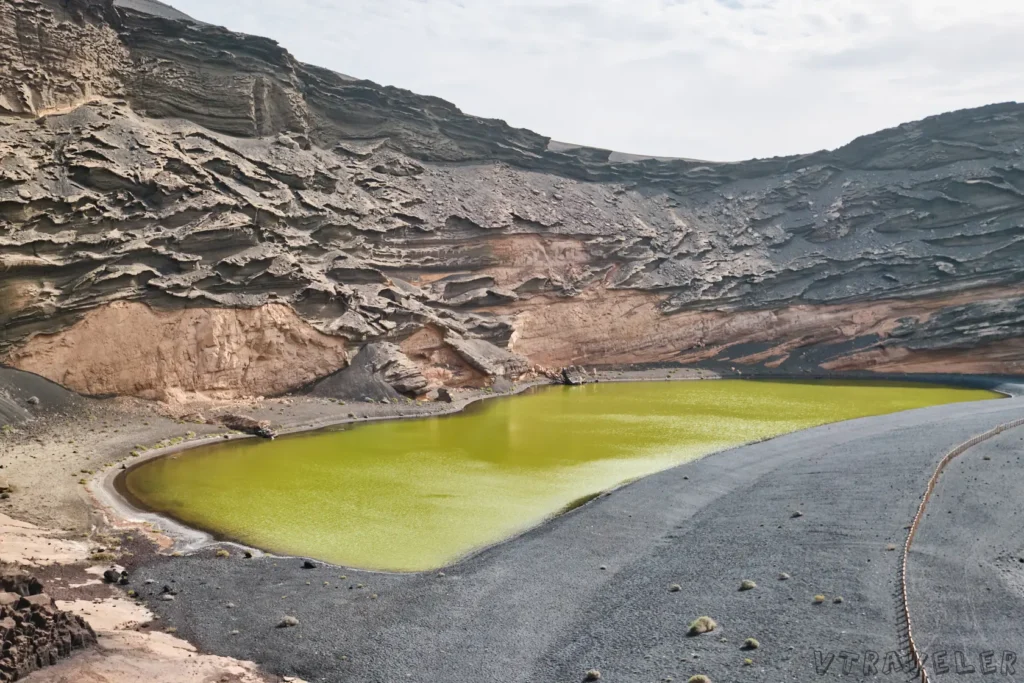
This natural attraction in the south of the island is known for its bright green waters contrasting with the grey volcanic sand. The lagoon was formed by a volcanic eruption and its unique colour is caused by algae growing in the warm water.
Los Hervideros volcano (Los Hervideros)
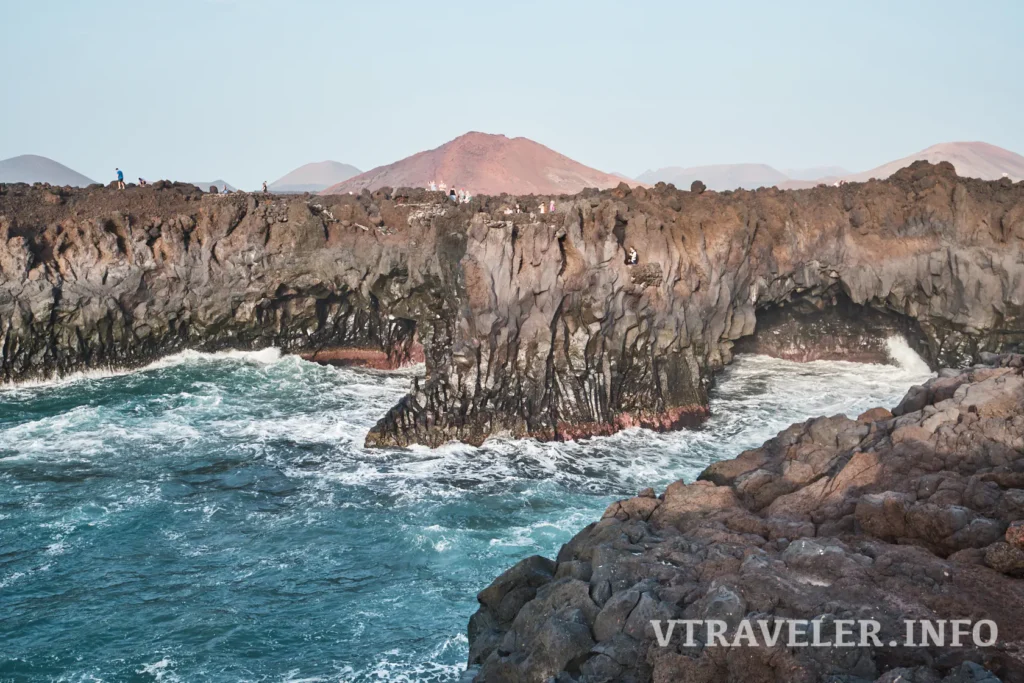
This volcanic massif in the western part of Lanzarote has become one of the island’s main natural attractions. Here you can watch the waves of the ocean crash against the lava rocks, creating a mesmerising spectacle of the raging elements.
Timanfaya National Park
Lanzarote’s main natural attraction is Timanfaya National Park, which covers vast areas covered in volcanic lava after the 1730-1736 eruption. Here you can see dormant volcanoes and learn more about the geological history of the island.
Museo Atlántico (Atlantico Museum)
An unusual underwater museum located near the resort of Playa Blanca. Here you can see more than 300 sculptures on the seabed. This spectacle not only attracts divers, but also contributes to the development of the underwater ecosystem.
Mirador del Rio Lookout

Designed by Cesar Manrique, the observation deck offers spectacular views of the Atlantic Ocean and the island of La Graciosa. This place is ideal for those who want to enjoy Lanzarote’s natural scenery from above.
Los Verdes Cave (Cueva de los Verdes)

This volcanic cave is one of Lanzarote’s most famous natural attractions. Formed thousands of years ago by the eruption of the Corona volcano, Los Verdes Cave is part of the longest lava tube in the world. Walking through it, you can enjoy the amazing underground landscapes and learn more about the island’s volcanic history.
Red Mountain (Montaña Roja)
This is an extinct volcano, 194 metres high, located in the south of the island. Climbing the mountain is easy and from the top you can enjoy spectacular views of the surrounding area. It is especially beautiful here at sunset, when the sun colours the mountain in bright hues.
Mount Colorada (Montaña Colorada)
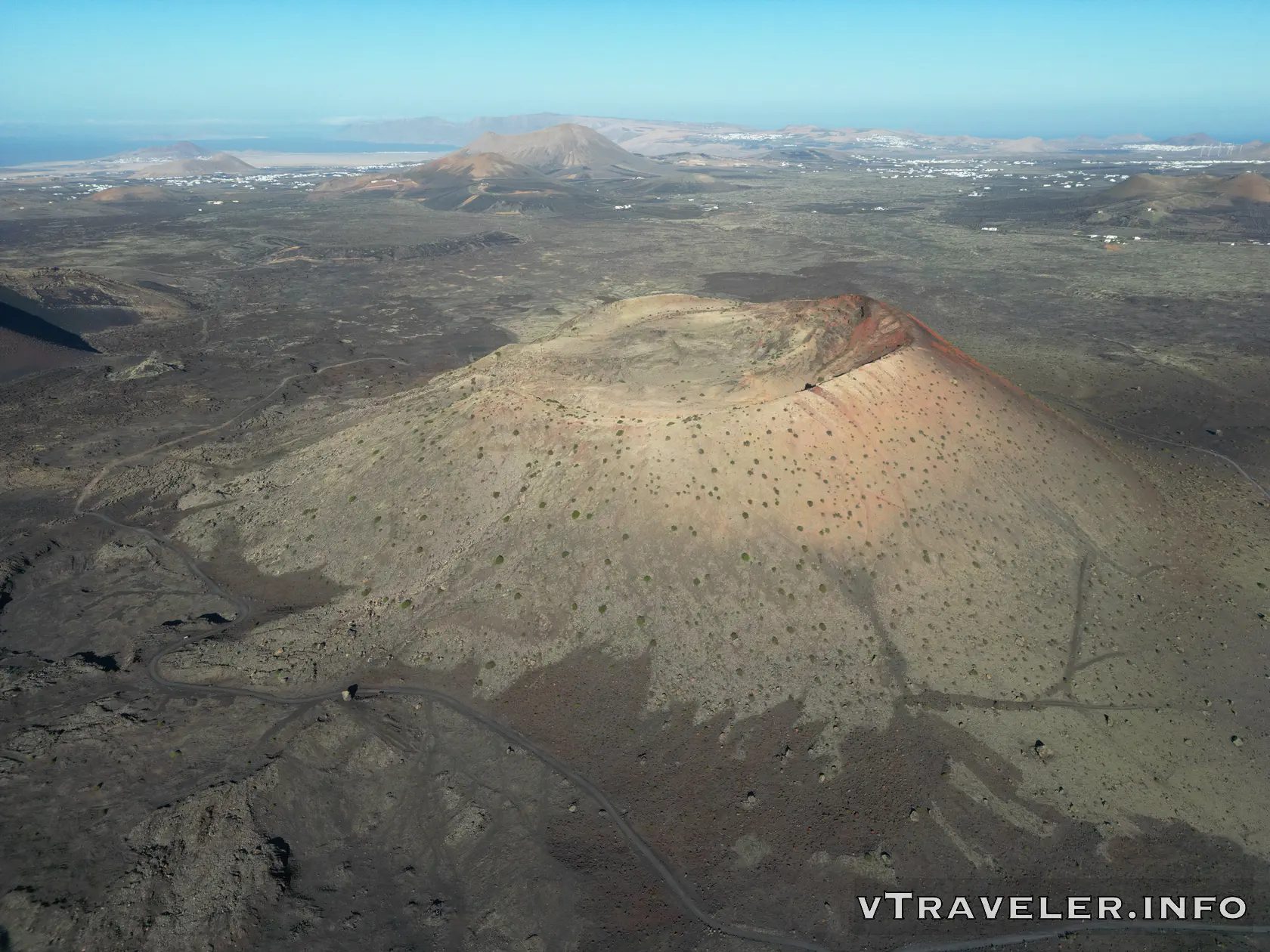
One of the most picturesque places in Lanzarote. This mountain is famous for its shimmering colours, from green to red and orange, depending on the light and time of day. Nearby is the Volcano Bomba, a huge boulder ejected from the volcano, which is another unique natural attraction.
Salinas de Janubio (Janubio Salt Lakes)
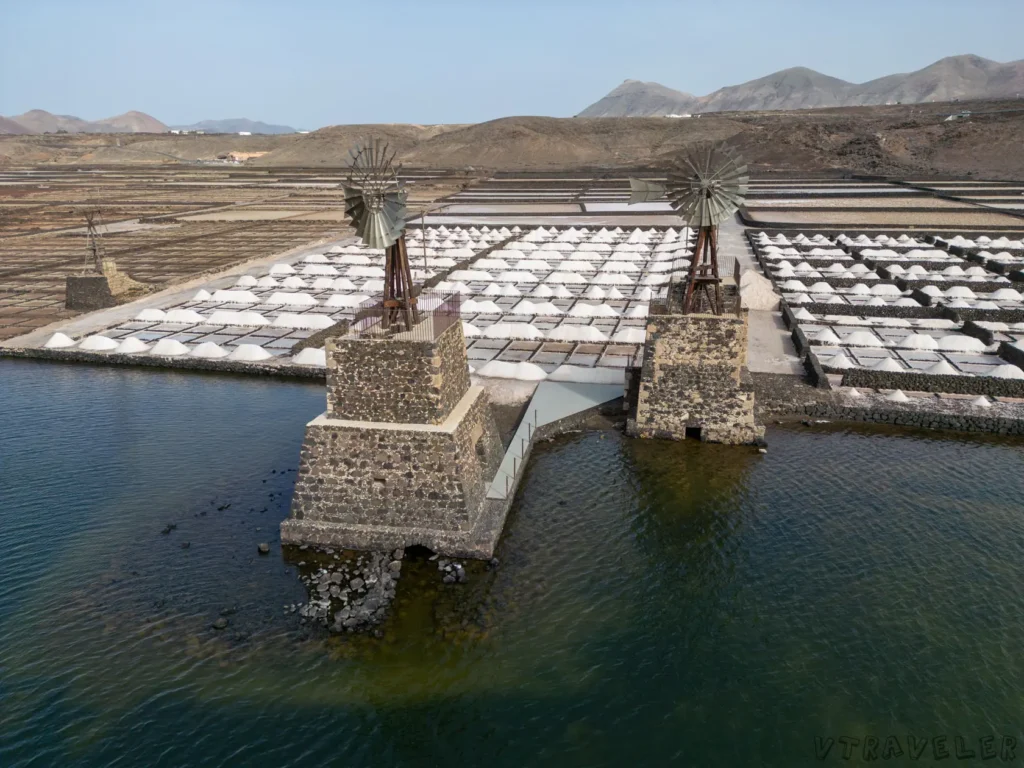
These salt lakes are a natural lagoon where salt is mined. The water here forms bizarre patterns due to the different shades of the salty surface. A visit to this place allows you not only to enjoy the unusual views, but also to learn about the salt extraction process.
Casa Museo de César Manrique (César Manrique House Museum in Haría)
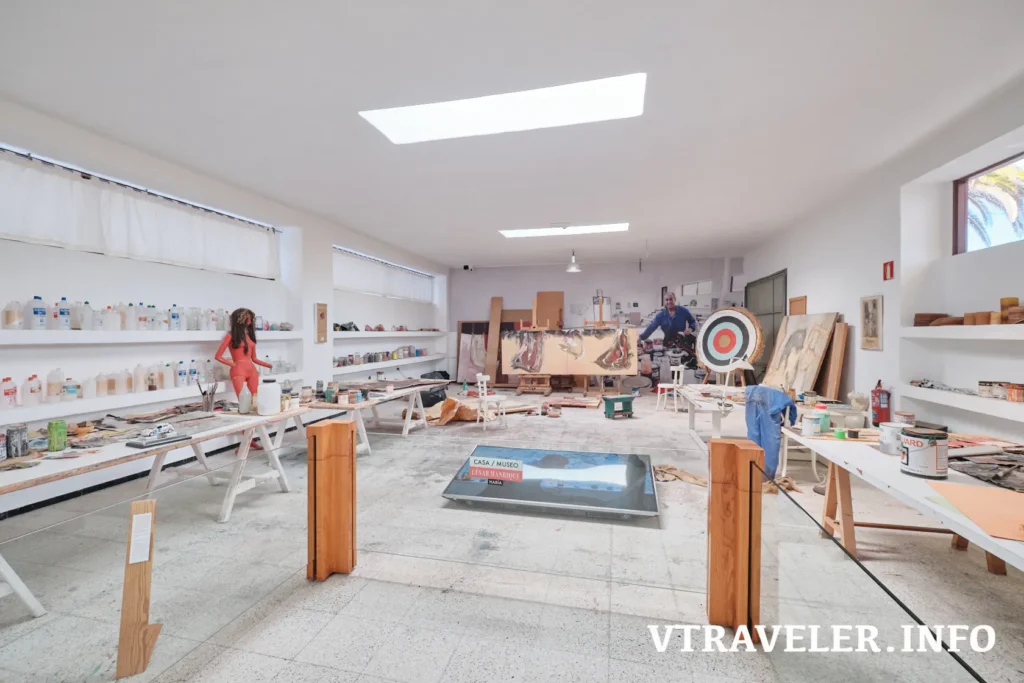
Designed by César Manrique himself, this house museum showcases a unique combination of nature and architecture. Set in natural caves, the house showcases the works of the great master and offers a tropical beauty surrounded by lava landscapes.
Santa Bárbara Fortress (El Castillo de Santa Bárbara)

This fortress, located on top of the Guanapay Volcano, was built in the 16th century to defend against pirates. Today it is home to the Museum of Emigration and Piracy, where you can learn a lot about island life and history.
Castillo de San Gabriel (San Gabriel Castle)
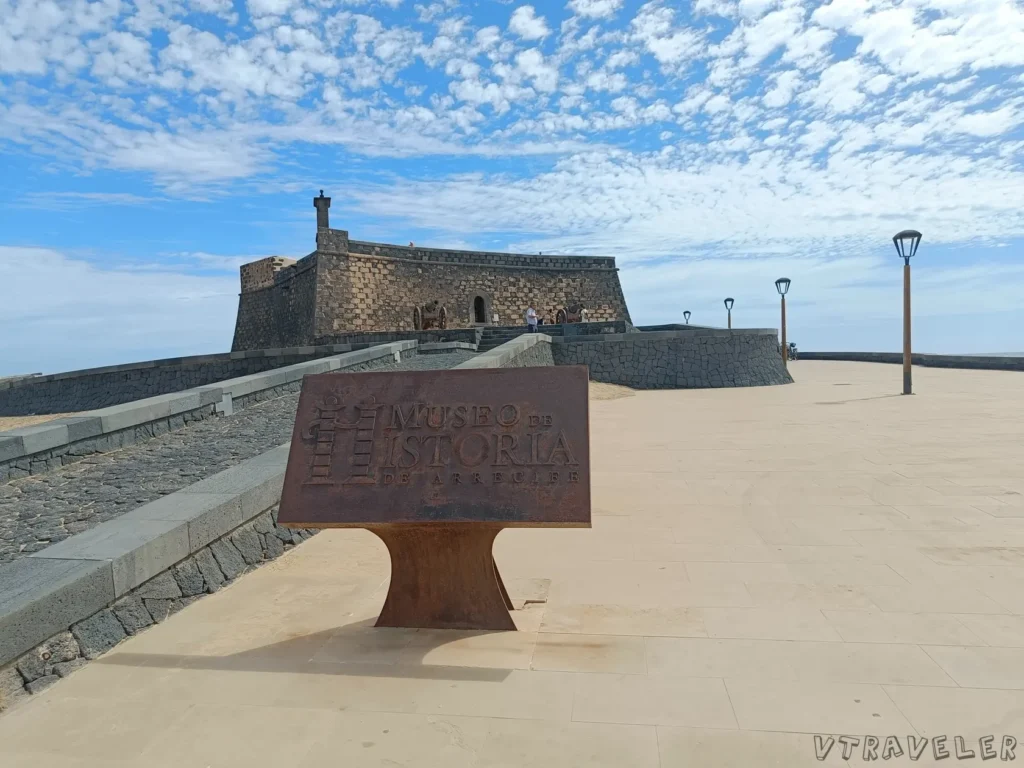
The Castillo de San Gabriel, built in the 16th century, was an important defensive point to protect Lanzarote from pirates. Today it is an archaeological museum where you can learn about the island’s history and culture.
El Cuervo Volcano (El Cuervo)
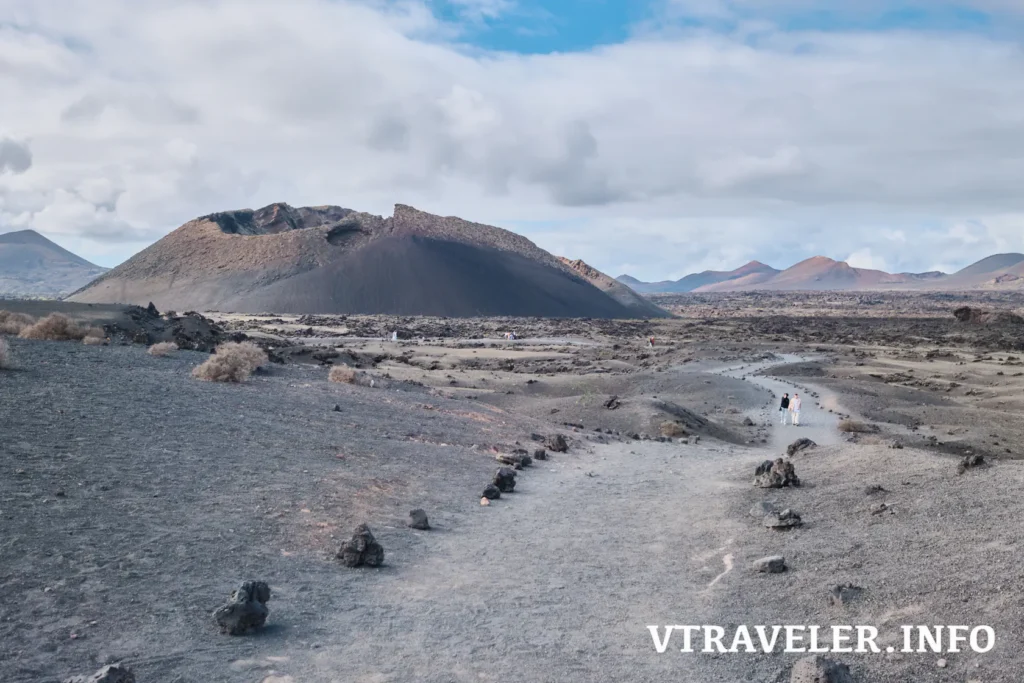
This is one of the best places to walk in Lanzarote. The El Cuervo volcano is impressive in its rugged landscape and a walk around its crater will allow you to enjoy the unique volcanic scenery.
El Grifo winery
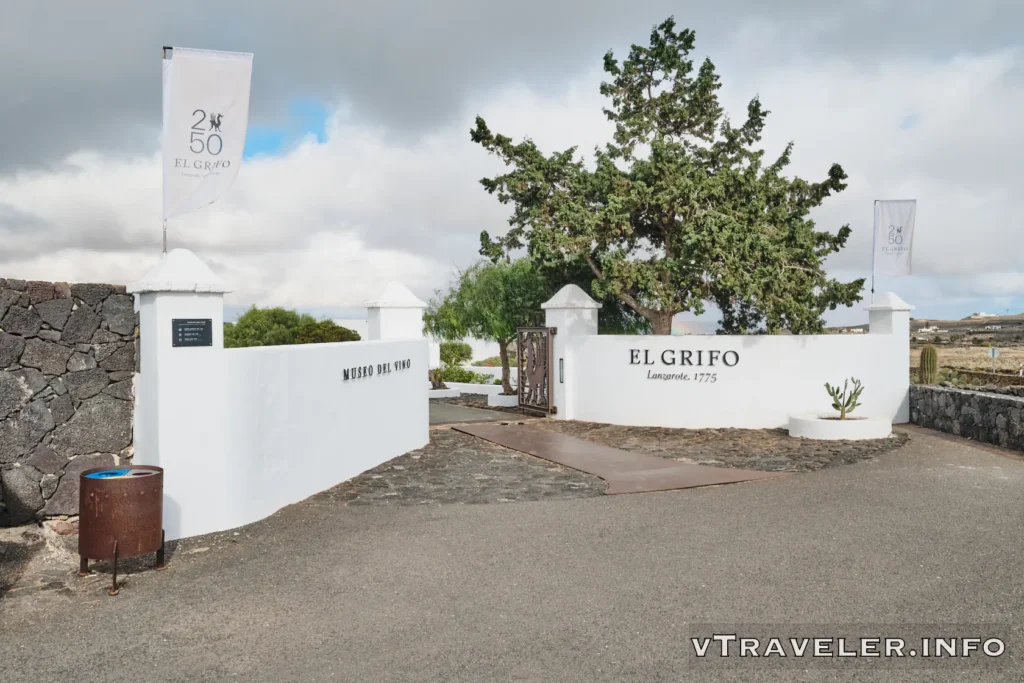
One of the oldest wineries in Lanzarote, founded in the 18th century. The famous Malvasia wine is produced here. The winery also has a museum and library dedicated to the history of winemaking. Visitors can taste and buy local wines.
Museo Agrícola El Patio
This agricultural museum tells the story of traditional life on Lanzarote. It displays antique farming tools and interiors. Local produce including farmhouse cheeses and wines can also be purchased here.
Mirador de Guinate – observation deck
At 500 metres high, this observation deck offers stunning views of the Chinijo Archipelago and the island of La Graciosa. It is especially worth coming here in the afternoon to see colourful sunsets and incredible scenery.
Aquarium Lanzarote
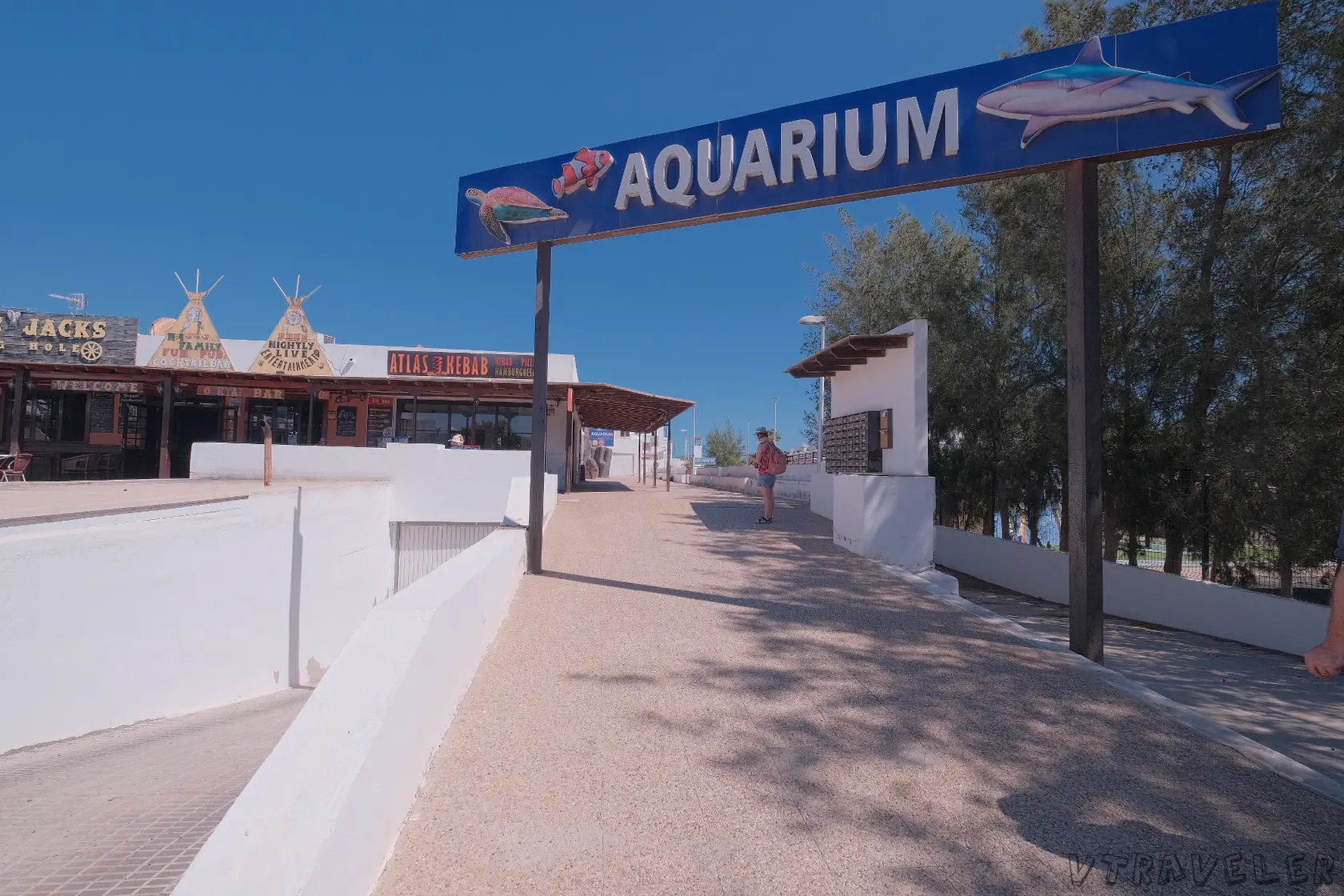
This is one of the largest aquariums in the Canary Islands, located in Costa Teguise. Here you can see a variety of marine life including sharks and tropical fish. The aquarium also offers interactive areas where you can get a closer look at underwater life.
Costa Teguise Aquapark

An ideal place for family holidays, offering a variety of water rides and relaxation areas. The Aquapark is ideal for children and those who want to enjoy an active holiday.
Papagayo Beach (Playa de Papagayo)
One of Lanzarote’s most picturesque beaches, set in a small bay with white sand. It is the perfect place to see a fantastic sunset or spend a day on the coast enjoying the crystal clear waters.
El Golfo Village (El Golfo)

El Golfo is a charming fishing village with traditional white-washed houses and a picturesque green lagoon. Here you can savour fresh seafood in one of the local restaurants and enjoy a unique atmosphere.
Natural pools in Charco del Palo
These volcanic pools are the perfect place to swim at any time of the year. Here you can relax in the warm water and enjoy the tranquillity of the surrounding nature.
Teguise

The historic town of Teguise is one of the oldest in the Canary Islands, where you can stroll through the narrow streets and feel the atmosphere of the past. This town has been the capital of Lanzarote for over 450 years and still preserves many architectural and cultural monuments.
El Diablo Restaurant on El Diablo Volcano
One of the most unusual restaurants in the world, where food is cooked on a grill set directly on the volcano. This unique restaurant, created by Cesar Manrique, is located in Timanfaya Park and offers dishes cooked on the natural volcanic heat.
Punta Mujeres Village
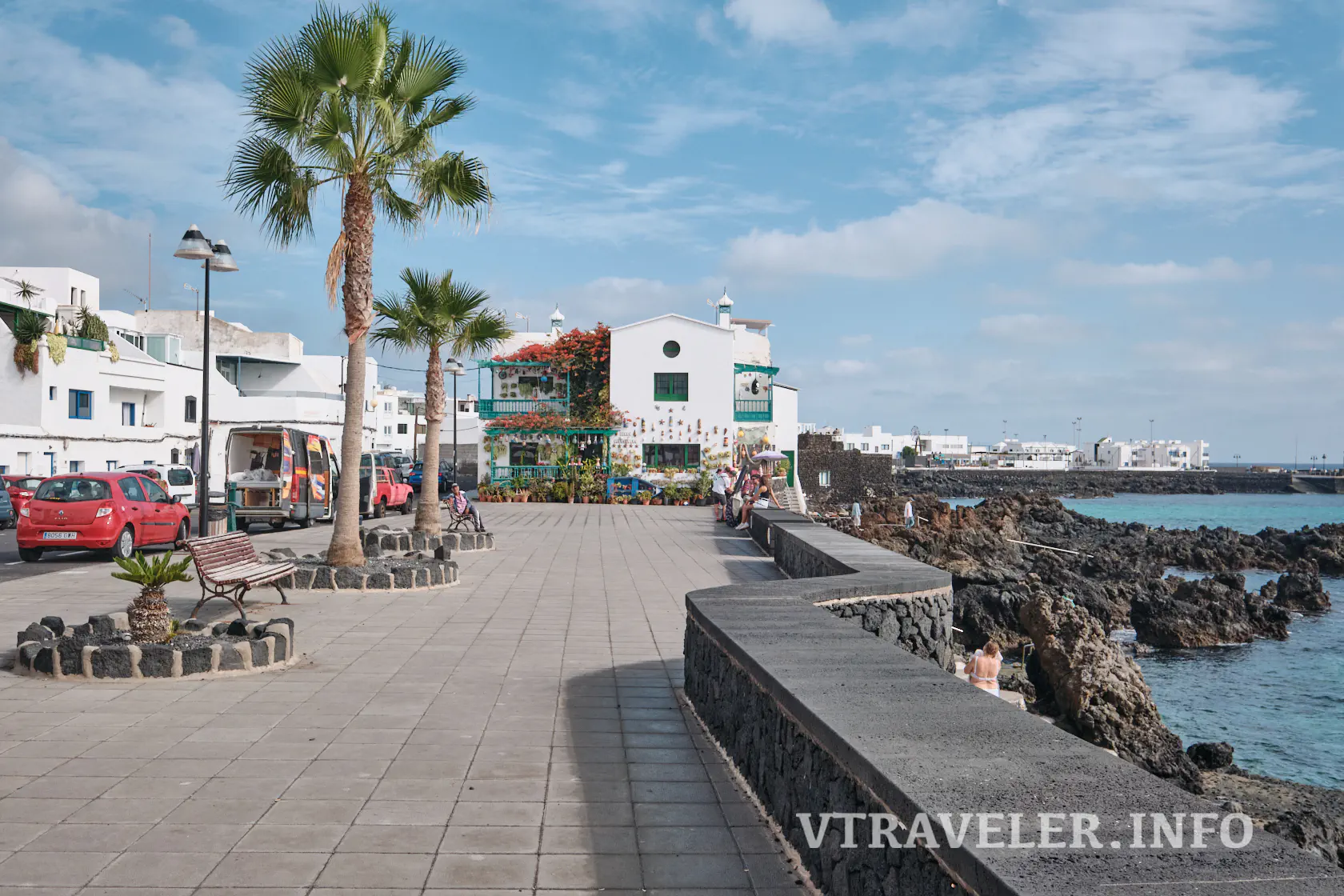
This small fishing village in the north of Lanzarote attracts with its authentic style and natural volcanic pools. Here you can enjoy a leisurely stroll through the narrow streets and swim in the warm waters of the natural pools.
Grieta del volcánica Montaña Blanca (Montaña Blanca Volcanic Fissure)
This volcanic fissure on the slope of the Montaña Blanca volcano is a fascinating natural phenomenon to walk through. The route through the fissure will offer stunning views of the layers of volcanic rock and allow you to take unique photographs.
Castillo de Las Coloradas (Castle of Las Coloradas)
This ancient stone castle, located on Playa Blanca, was built in 1402 and is one of Lanzarote’s oldest defences. The castle once protected the coast from pirates and today its ruins are of interest to tourists.
Los Dolores Chapel (Ermita de los Dolores)
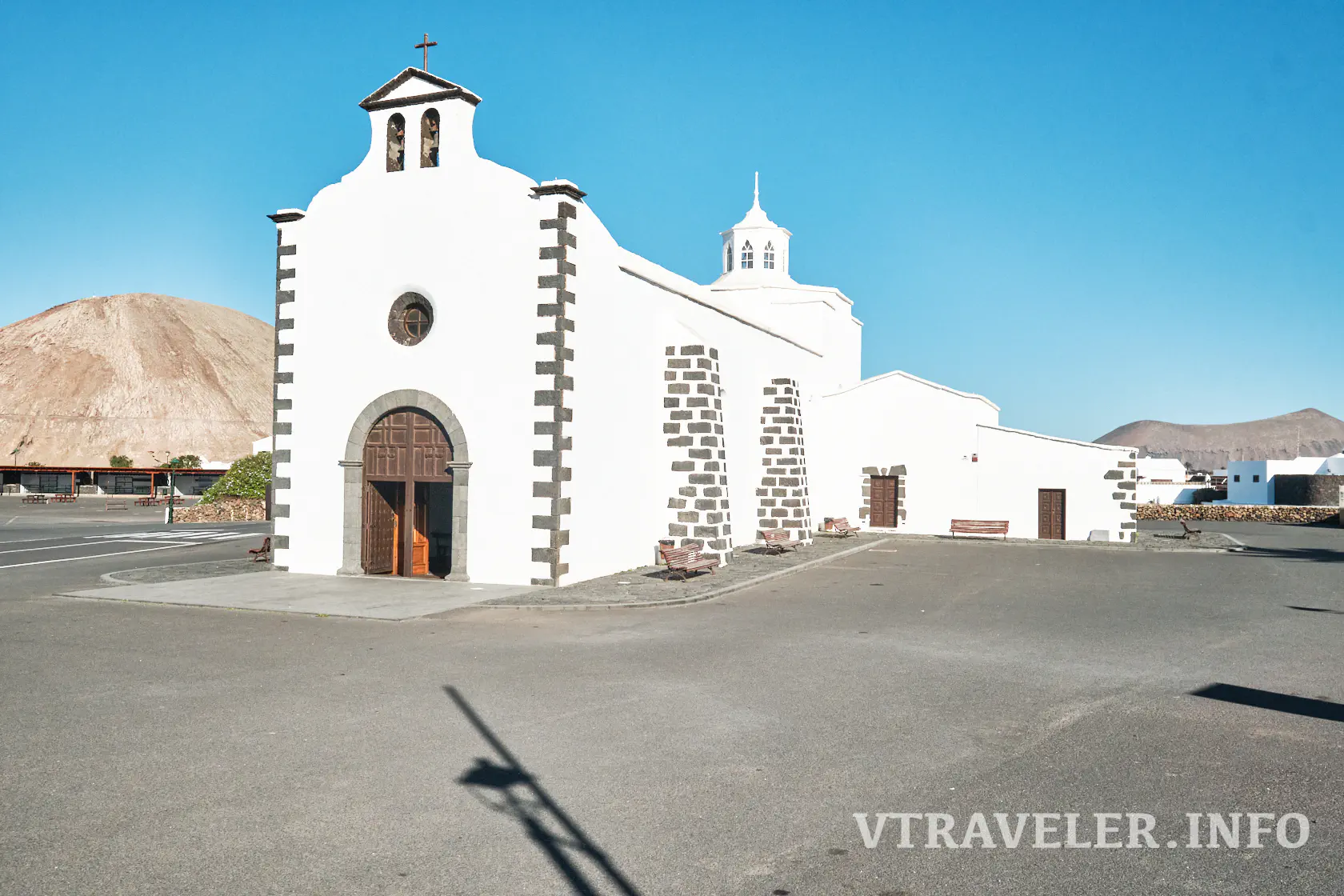
The chapel, built in traditional Canarian style in honour of Saint Dolores, is one of the most revered religious shrines on the island. It was erected in the 18th century after a volcanic eruption and serves as a symbol of faith and hope for the locals.
Casa Museo del Campesino (El Campesino House Museum)

This museum is dedicated to Lanzarote’s peasant culture and is another project of Cesar Manrique. Here you can learn about the life and labour of the farmers who grew grapes and other crops on the volcanic land. The museum features traditional crafts, cookery and ceramics-making workshops.
Fundación César Manrique
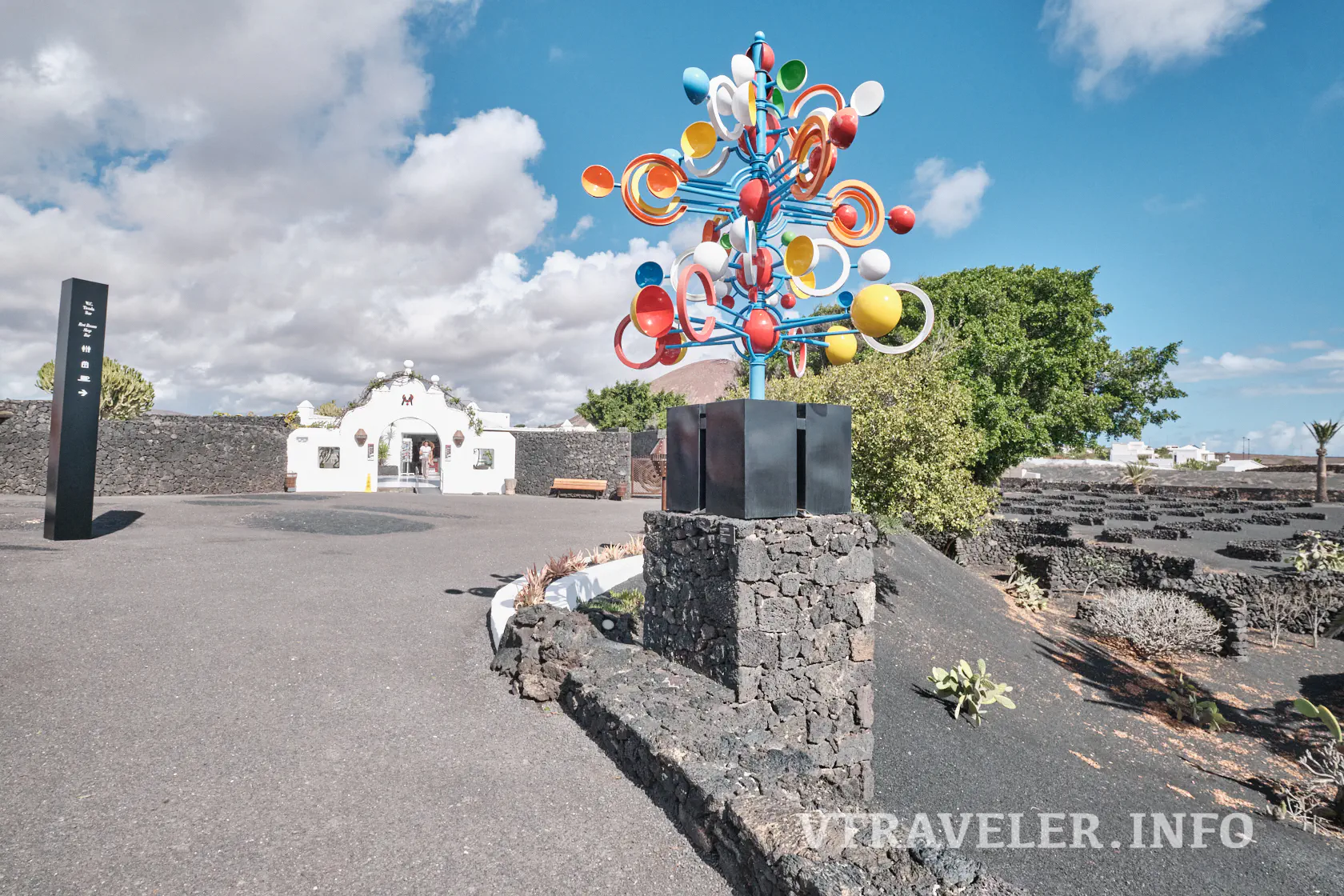
The house-museum of artist and architect César Manrique is set in a volcanic landscape and blends in perfectly with its surroundings. The house was donated to the island in 1988 and today serves as a cultural centre where exhibitions and congresses are held.
El Gincho volcano (El Gincho)
El Gincho is a small volcano located on the coast. One of its slopes juts out into the ocean, creating a picturesque contrast between the volcanic landscape and the water surface. There are hiking trails around the volcano that allow you to enjoy views of the ocean and the verdant lake.
Castillo de San José Museum of Contemporary Art (Castillo de San José)
This museum was created within the walls of the historic San José Fortress, built for defence against pirates. In 1976, the Museum of Modern Art was opened here, featuring works by famous Spanish artists, as well as an exhibition dedicated to Pancho Lasso, a Canarian artist.
Lagomar
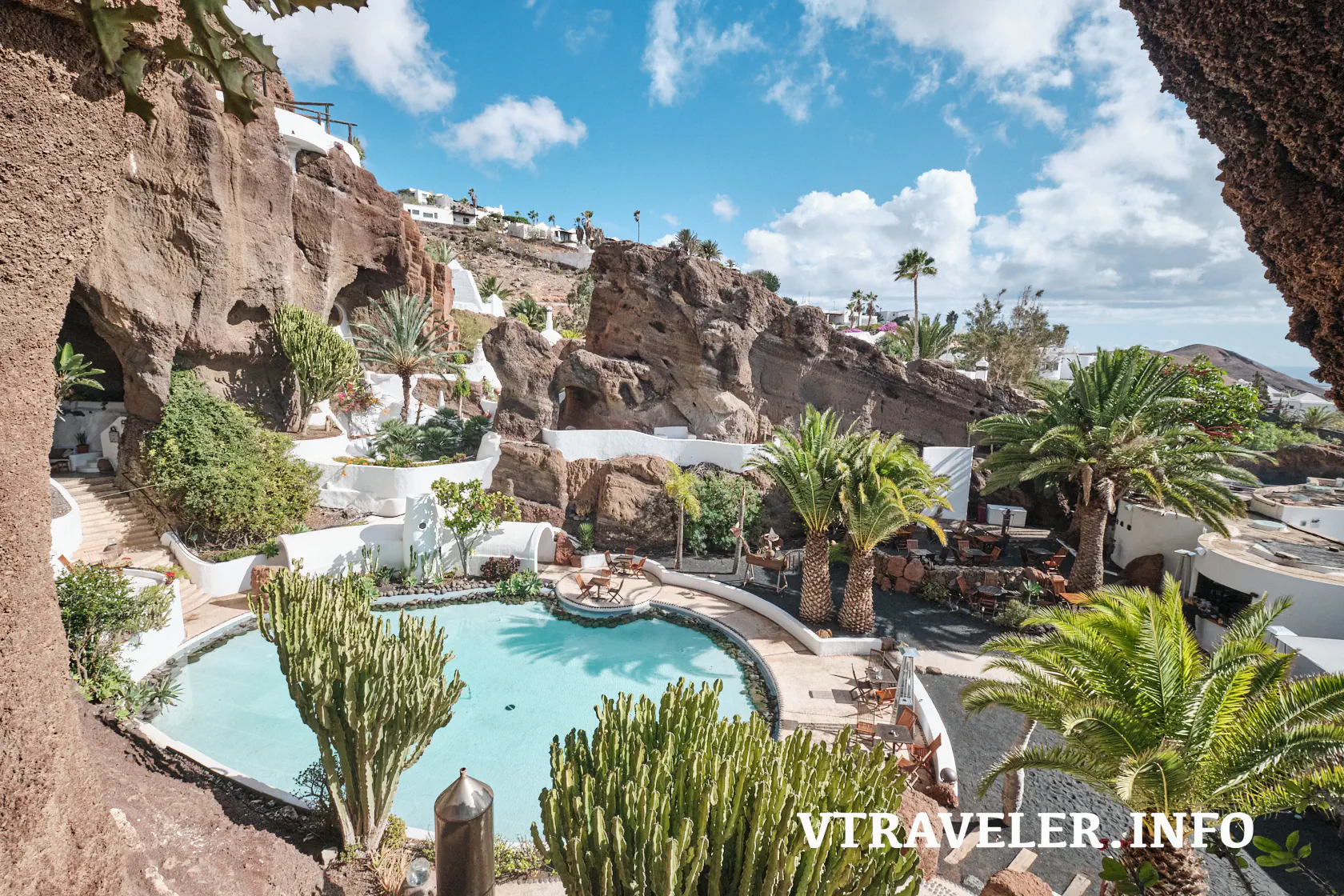
Lagomar is a unique place where art, nature, and architecture come together harmoniously. Located in the picturesque region of Lanzarote, this museum captivates visitors with its unusual concept and original design. Built into volcanic rock formations, Lagomar reflects the spirit of the island, blending natural landscapes with expertly integrated architectural elements. Every corner of this space is crafted with attention to detail, making it a true visual and cultural landmark.
Once owned by the famous actor Omar Sharif, Lagomar today attracts not only art and architecture enthusiasts but also everyone who appreciates extraordinary and inspiring places. It is not just a museum—it is a living space where history, creativity, and nature merge into a unified whole, creating a unique atmosphere for visitors.
Conclusion
To summarise, Lanzarote is the ideal destination for those looking for things to see, places to visit and places to go for new experiences. The island offers a wealth of attractions to suit travellers of all ages, whether they are tourist attractions or hidden natural spots. If you are planning your own excursions, Lanzarote will delight you with its unique tourist itineraries. It is important to note that you can find the best holiday destinations as well as active entertainment. The island offers plenty of options on what to see in Lanzarote, from volcanic landscapes to historical monuments, beautiful beaches and architectural masterpieces. Whether you are looking for natural attractions, cultural sites or family holidays, every corner of Lanzarote will offer unforgettable experiences and vivid memories.

